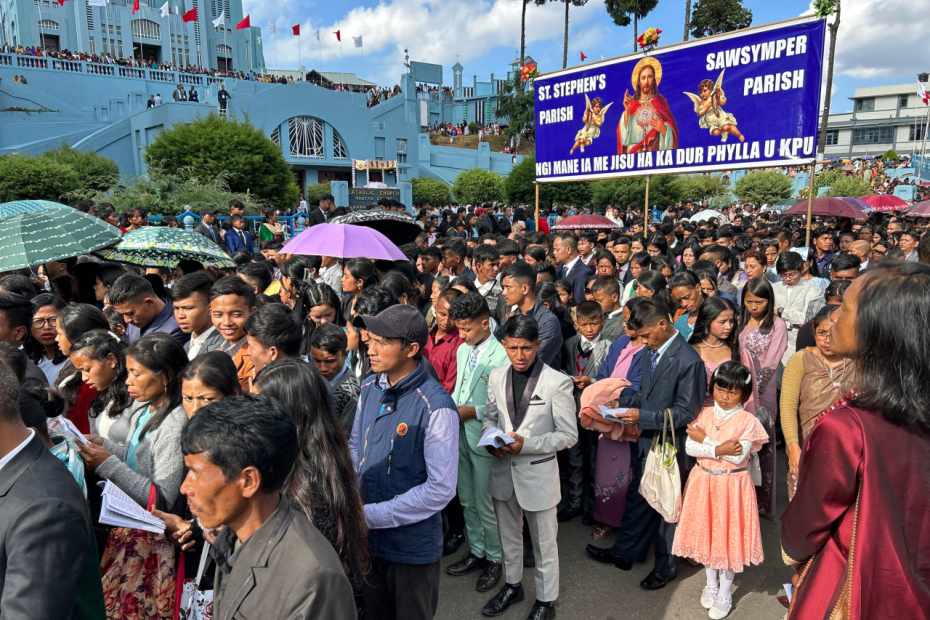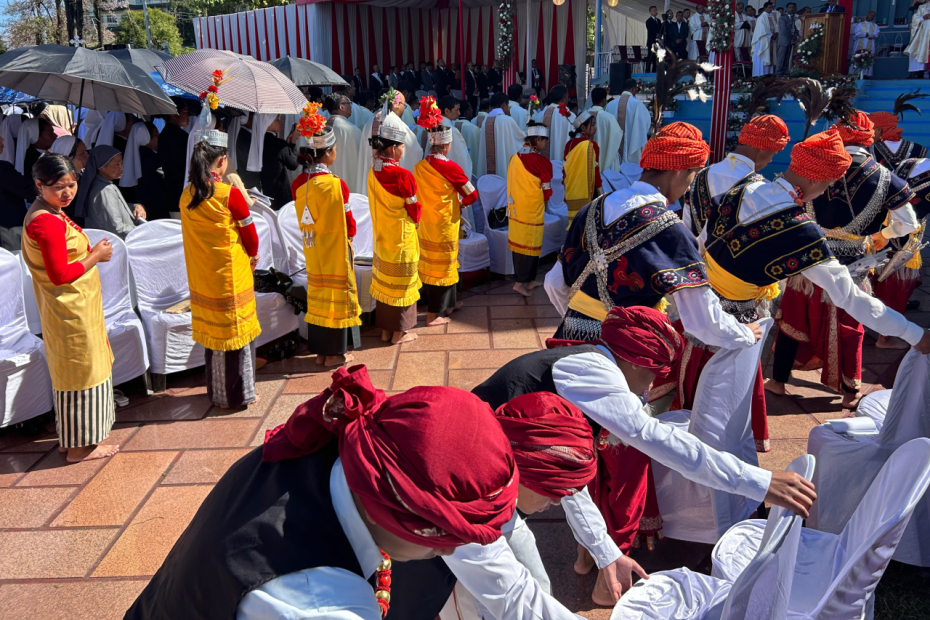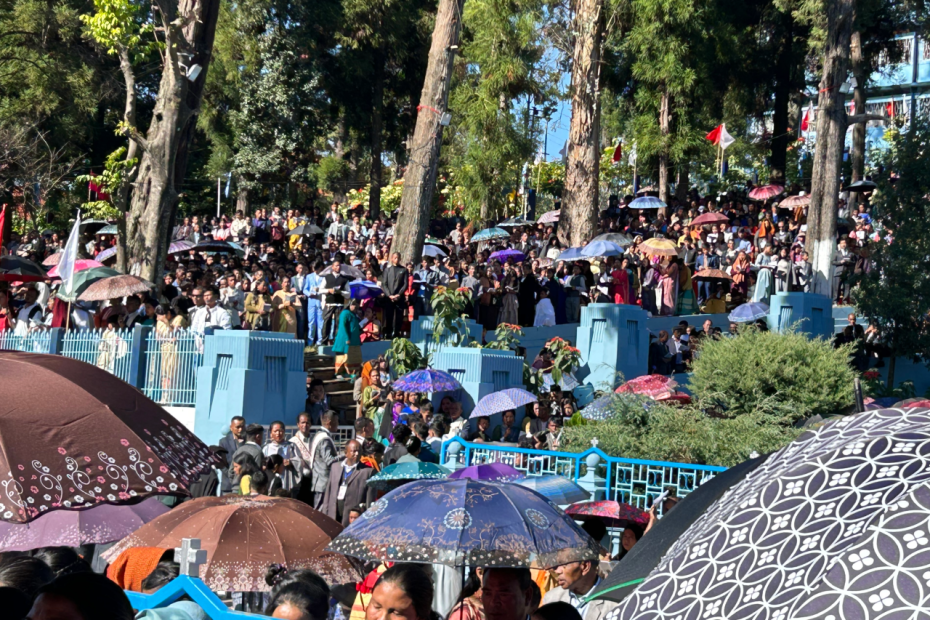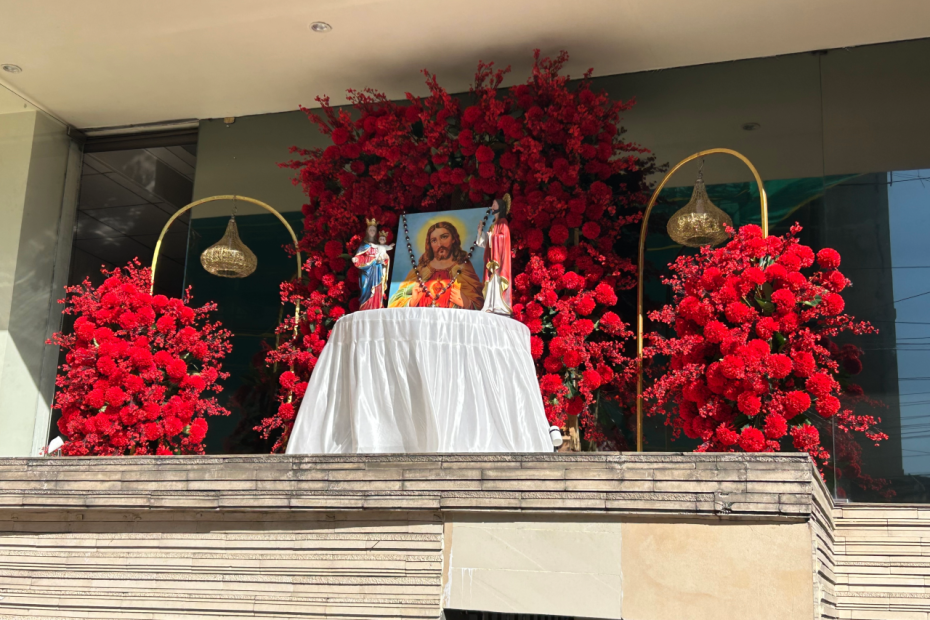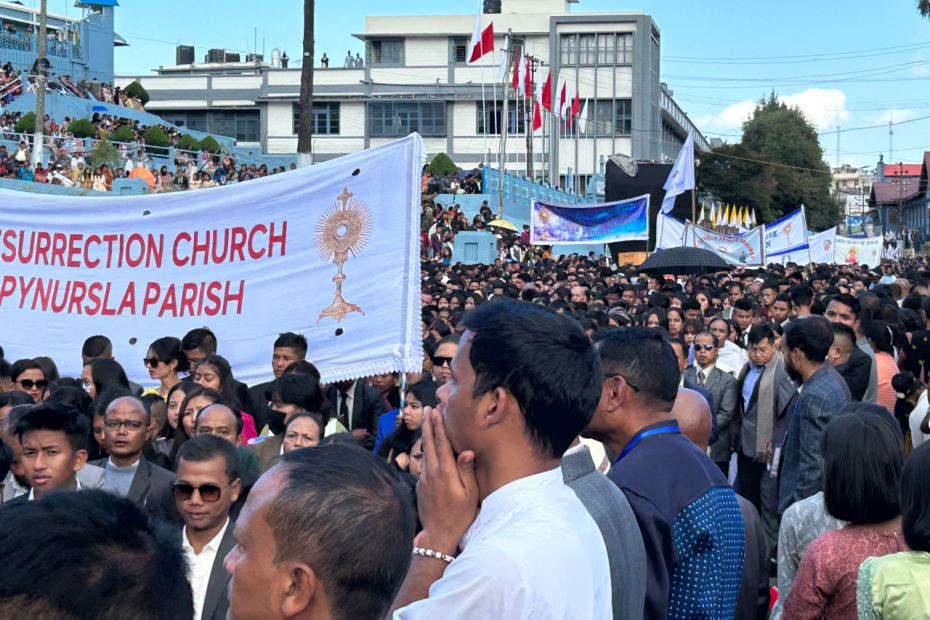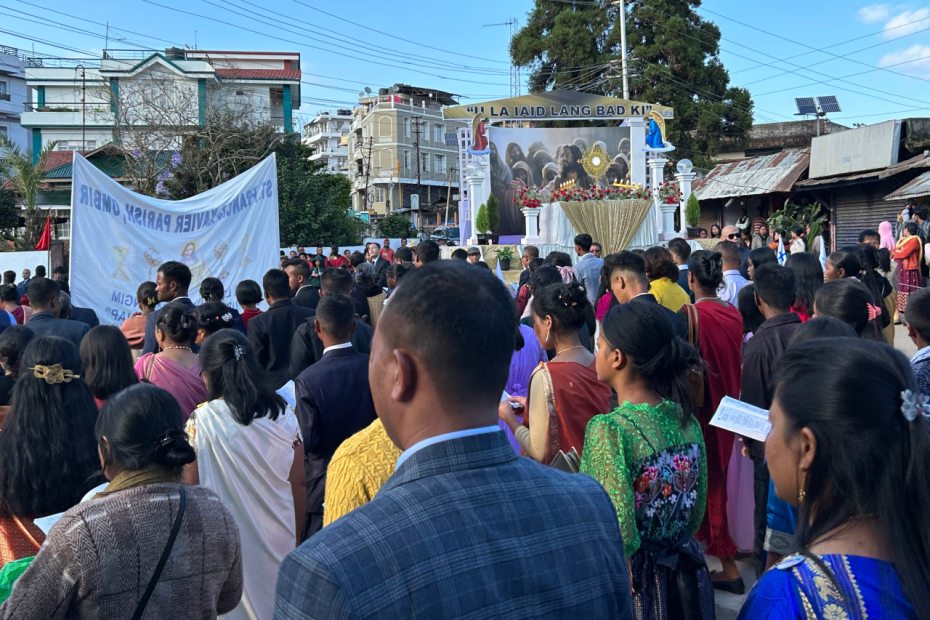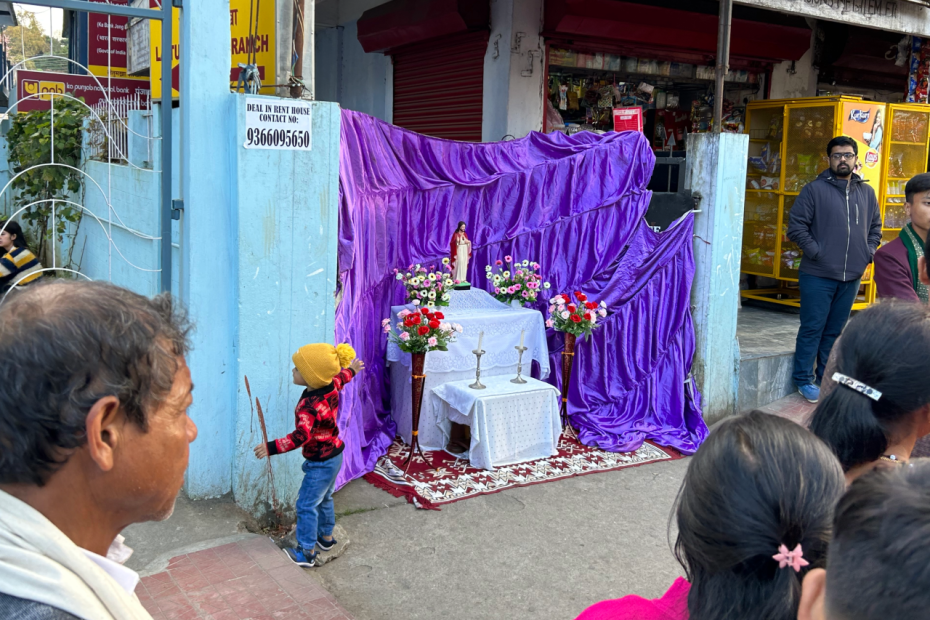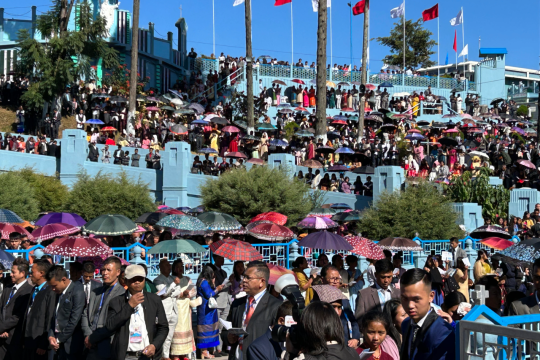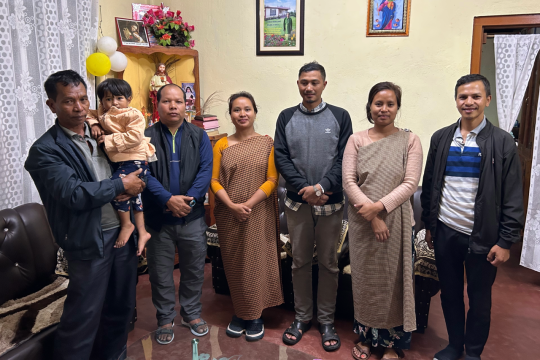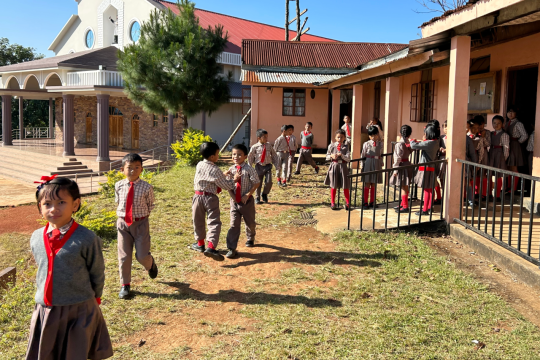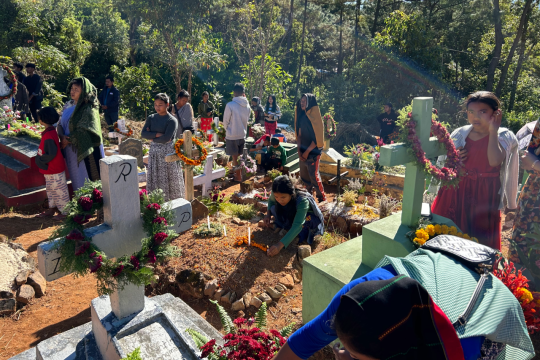As is true in many parts of the world, the pattern and priority of feasts in the Khasi and Jainta homeland has its own local rhythm. Christmas and Easter draw the highest Mass attendance of the year, though Christmas is not otherwise celebrated with all of the cultural fanfare (or distraction) that defines it in many parts of the world. Asked if there was anything special that they did for Christmas, such as the way people in some cultures decorate extensively or exchange presents, one person’s answer covers what others said: “We didn’t do anything. We just get cakes… We go for Mass… that is the main thing. After that, we come home and sleep.”1
Two occasions, All Soul’s Day and the diocesan Eucharistic procession two weeks later stand out as high points of the year. In 2023, when the Eucharistic procession coincided with Diwali, the Hindu celebration of lights that is the rest of India’s biggest celebration of the year, the Eucharistic procession was a much bigger event in Shillong.
Parishes also organize Eucharistic processions on a smaller scale on different dates, but the diocesan procession has been a major event for at least a century, designed to be a spectacle and a show of unity that attracts Catholics from throughout Meghalaya. In 2024, the year recounted here, several bishops and the papal nuncio to India came to participate.
For days before, crews were visible cleaning and painting grottoes and other spots all around the cathedral grounds. Buses and cars began to flow in by midmorning on the Sunday of the procession, which often means that they began their journey well before dawn. In the late morning, a grand outdoor Mass was held across from the cathedral, at a dedicated, permanent altar. Some faithful could look down on it from the hillside cathedral steps, but most participants needed to watch on giant screens set up on several parts of the large cathedral grounds. A large number of priests celebrated, and groups of sisters and seminarians from many orders filled the grounds.
The procession, after lunch, is a dress-up affair, and both men and women wore the sort of clothes that might be expected at a wedding, including dress shoes that were not especially comfortable for a two-hour procession. Although this is a region with many children, relatively few children were present, and neither were there many adults over 50, perhaps because of the strain of travel and walking. Young adults predominated, whether with families, in groups of friends, or as couples.
Participants all seemed to walk with their parish group, singing hymns or reciting prayers. Others lined the sidewalks to watch. The occasion, which stretched out over more than 6 hours between the time groups made their way in and could begin to leave the city, provided many social and religious opportunities.
- 1 All articles on Meghalaya are based on interviews with dozens of Khasi and Jainta people from St. Francis Xavier parish, Umbir; St. Peter’s parish, Jaliphet and its station in the village of Muknor; and in Umoid and Shillong.
